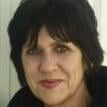Krystle Cansino from South San Francisco conquers the world as a monarch of many motions, all rooted toward compassion.
During the day, they work as a crisis clinician for the county and city of San Francisco, collaborating with law enforcement to develop care plans for critical incidents. May it be a mental health emergency, behavioral crisis or criminal activity, Cansino arrives at the scene as a first responder, ready to offer mental health assistance to victims and survivors.
Yet, Cansino’s expertise goes beyond emergency response.
As a 42-year-old queer Filipina American, their intersecting identities shaped a perspective valuable to local legislation. For almost six years, they represented the cultural nuances of the queer experience toward underrepresented groups as a member of San Mateo County’s LGBTQIA+ Advisory Commission. Back home in South City, their mental health profession positioned them as a vital member of their city’s Equity and Public Safety Commission.
During this year’s San Mateo County Pride March on June 14, Cansino sat on the back of a black convertible as grand marshal and waved a Progress Pride Flag to greet the individuals and families who came out to celebrate a day that marks dignity and resistance.
“A huge range of people came out to support the parade and it was nice, especially in this day and age,” Cansino said. “It’s hard and scary to be out, so to go outside and show your support towards the Pride Parade felt like people were really brave to be not just a participant.”
On inclusion
Cansino’s involvement with the LGBTQIA+ Community did not stop at the Peninsula as they set their sights on breaking barriers along the California Coast. The organization Queer Surf redefines who gets to belong on the beach, dismantling barriers that left queer and transgender individuals from reveling in the water.
Surfing has been one of Cansino’s sports, and they joined the organization to set up events in the coastal towns of Pacifica and Half Moon Bay. Through the organization, they push for visibility in surf culture that will elicit more queer, trans and other underrepresented groups to the sport, which white male surfers have long dominated.
“When people say a surfer, their first idea is a white male, tall, fit body,” Cansino said. “But when you’re out there in the water, you don’t know what people’s bodies are. You’re just a surfer; we’re all the same.”
Cansino’s age and size almost prevented them from surfing, but their father’s words dissipated her qualms: “If there’s a will, there’s a way.”
They won’t wait to lose weight, nor let years pass by before they experience the thrill of catching waves.
“No matter how old you are, no matter what your size is, no matter how much money you have, just go and chase joy,” Cansino said.
Recommended for you
On purpose
Cansino applied to the South San Francisco Equity and Public Safety Commission to expand the city’s emergency response team.
When the county instituted the Community Wellness and Crisis Response Team — a dedicated action unit deployed alongside the city’s police department to conduct welfare checks and action during mental health calls — South City was among the four cities chosen to pilot this new standard of care.
Banking on their knowledge as a crisis clinician, Cansino applied to the commission, ready to share their expertise with the team and to seed the idea of starting the city’s independent response team.
Cansino envisions that South San Francisco will fund its crisis team, a dream they hope to fulfill within the next five years.
On representation
While Cansino spends most of their time influencing policies and leading crisis response, they always ensure that they won’t despair and miss out on immersing themselves in the arts.
Behind the lens, they immortalized intimate moments at weddings and preserved the vibe of cultural events — memories crystallized in every frame. In film productions, they gravitate toward projects led by queer, trans and female creatives — sometimes calling the shots as director of photography, other times quietly roaming the set, blending in like a fly on the wall to document the creative process as a behind-the-scenes photographer.
For Cansino, queer, people of color, and immigrant stories ingrain the feats and oppression tied to identity and marginalization. Through avenues like storytelling and filmmaking, these narratives create space to shift, reclaim and uplift identity, affirming one’s value and existence.
“There’s so much value that the [Black, Indigenous and people of color] community and the queer community bring to the world, and that goes so unnoticed,” Cansino said. “I think we just need to bring value to what our stories are.”
Before Pride Month ends, Cansino reminds the community that the fight for the protection and acceptance of marginalized communities does not stop after the parade.
“We need to protect our trans community,” Cansino said. “They deserve rights, they deserve joy, they deserve dignity, and I feel like this administration is just demolishing that.”





























(0) comments
Welcome to the discussion.
Log In
Keep the discussion civilized. Absolutely NO personal attacks or insults directed toward writers, nor others who make comments.
Keep it clean. Please avoid obscene, vulgar, lewd, racist or sexually-oriented language.
Don't threaten. Threats of harming another person will not be tolerated.
Be truthful. Don't knowingly lie about anyone or anything.
Be proactive. Use the 'Report' link on each comment to let us know of abusive posts.
PLEASE TURN OFF YOUR CAPS LOCK.
Anyone violating these rules will be issued a warning. After the warning, comment privileges can be revoked.